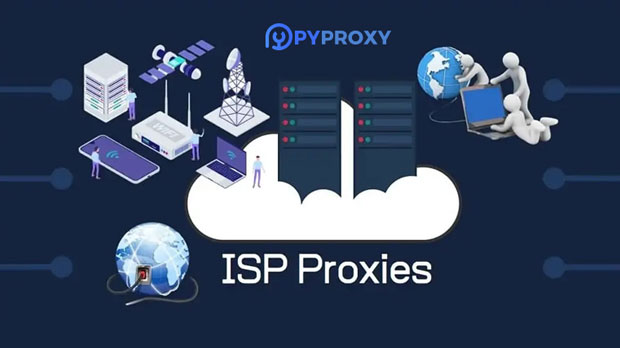In the modern internet age, privacy and security have become primary concerns for many users. Extra proxy extension plugins provide an additional layer of protection, offering anonymity and secure browsing by routing internet traffic through proxy servers. The Extra Proxy plugin is an essential tool for users who wish to surf the web privately, bypass geo-restrictions, or maintain online security. However, not all browsers are compatible with such plugins. In this article, we will delve into which browsers support the Extra Proxy extension, exploring the features of popular browsers and their compatibility with these privacy-enhancing tools. 1. Introduction to Extra Proxy ExtensionsExtra proxy extensions are designed to enable users to route their online traffic through a proxy server. By doing so, they mask the user’s real IP address, thus enhancing privacy. These extensions often come with various features such as geo-spoofing, allowing users to appear as if they are browsing from a different location, which is useful for bypassing region-based restrictions. The plugins help secure internet connections by encrypting data, which is especially beneficial when using public Wi-Fi networks.However, the performance and availability of these proxy extensions depend on the browser being used. Different browsers have varying levels of support for such extensions due to their distinct architectures and policies surrounding third-party extensions.2. Major Browsers That Support Extra Proxy ExtensionsMost mainstream browsers support extra proxy extensions, but the compatibility and user experience may vary. Below, we explore the most popular browsers and their compatibility with proxy extensions.2.1 Google ChromeGoogle Chrome is one of the most widely used web browsers globally, known for its speed and reliability. Chrome supports a wide variety of extensions, including proxy tools. The Chrome Web Store offers several proxy extensions that users can easily download and install. Extra Proxy extensions designed for Chrome allow seamless configuration and easy activation, ensuring that users can mask their IP addresses effortlessly.However, Chrome’s policies require developers to ensure their extensions adhere to strict guidelines, which can sometimes impact the functionality of certain proxy extensions. Nonetheless, Google Chrome’s compatibility with extra proxy extensions remains strong, making it a top choice for privacy-conscious users.2.2 Mozilla FirefoxMozilla Firefox is another popular browser that supports extra proxy extensions. Known for its open-source nature and emphasis on user privacy, Firefox offers extensive support for various proxy tools. Firefox users can easily add extensions like Extra Proxy, which allow for customizable proxy settings and enhanced security features.One of the standout features of Firefox is its flexibility in handling extensions, making it easier for users to fine-tune proxy configurations according to their needs. Firefox’s commitment to privacy also makes it a preferred browser for individuals looking to enhance their online anonymity.2.3 Microsoft EdgeMicrosoft Edge, which replaced Internet Explorer, is based on the same Chromium engine as Google Chrome. This means that it supports most Chrome extensions, including proxy plugins. Extra Proxy extensions are available for Edge users through the Microsoft Store, enabling users to enjoy secure and anonymous browsing.Edge’s integration with Windows 10 and 11 further enhances its ability to manage proxy settings, providing users with a streamlined experience when using proxy extensions. Additionally, Edge offers compatibility with both paid and free proxy tools, which adds flexibility for different types of users.2.4 SafariSafari, the default browser on Apple devices, also supports a range of proxy extensions, though its ecosystem is more limited compared to other browsers. Extra Proxy extensions for Safari can be found on the App Store, and they provide many of the same features as those available on Chrome or Firefox. However, Safari has a more restrictive policy on third-party extensions, which sometimes results in limited support or less frequent updates for some plugins.Despite these limitations, Safari remains a viable option for users looking for privacy tools, particularly for those within the Apple ecosystem who prefer native browser functionality.3. How Proxy Extensions Work Across BrowsersWhile the basic function of extra proxy extensions remains the same across browsers, the way they are integrated and utilized can vary. Here's a closer look at how they work in different browsers.3.1 Installation and SetupThe installation process is fairly straightforward for most browsers. In Chrome, Firefox, and Edge, users can install the extension from their respective stores with a simple click. Once installed, users can easily configure proxy settings through the extension's interface. Safari’s installation process can be more involved, requiring users to manage settings directly through the system preferences.3.2 Proxy ConfigurationDifferent browsers allow different levels of configuration. In Chrome and Firefox, users can specify proxy settings such as location spoofing, IP masking, and the type of encryption used. Edge, being built on Chromium, offers similar flexibility in configuration. However, Safari’s limited extension support means that users may encounter fewer customization options for proxy setups.3.3 Performance and SpeedThe performance of proxy extensions can be influenced by several factors, including the browser's engine, the type of proxy server used, and the speed of the internet connection. Generally, Chrome, Firefox, and Edge provide smooth experiences with proxy extensions. However, users may experience slower speeds when using certain proxy servers or when multiple proxy configurations are enabled simultaneously.Safari’s performance can also be strong, though, due to fewer proxy extension options, it may not be as optimized for proxy-heavy tasks as its competitors.4. Factors to Consider When Choosing a Browser for Extra Proxy ExtensionsWhile most popular browsers support extra proxy extensions, some offer better experiences than others. Here are several factors to consider when choosing the best browser for using proxy extensions:4.1 Privacy FeaturesBrowsers like Firefox are known for their strong privacy features, including advanced tracking protection and cookie blocking. These features can enhance the effectiveness of proxy extensions. If privacy is a key concern, choosing a browser with robust privacy tools is essential.4.2 Customization and FlexibilityIf you require a highly customizable experience, Firefox and Chrome are good choices. Both allow users to fine-tune proxy settings extensively. Safari, on the other hand, may not offer the same level of customization due to its stricter extension policies.4.3 Performance and SpeedPerformance is an important factor when using proxy extensions, as they can sometimes slow down browsing speeds. Chrome and Edge, built on the same Chromium engine, offer fast and responsive browsing experiences, even with proxy extensions enabled.5. ConclusionExtra proxy extensions are valuable tools for enhancing privacy, security, and online freedom. Most major browsers, including Google Chrome, Mozilla Firefox, Microsoft Edge, and Safari, support proxy extensions, with varying levels of compatibility and performance. When choosing a browser for proxy use, consider factors like privacy features, customization options, and browsing speed to ensure the best experience.By understanding which browsers support extra proxy extensions and how they function across different platforms, users can make informed decisions about how to protect their online presence effectively.
Jun 25, 2025



































































